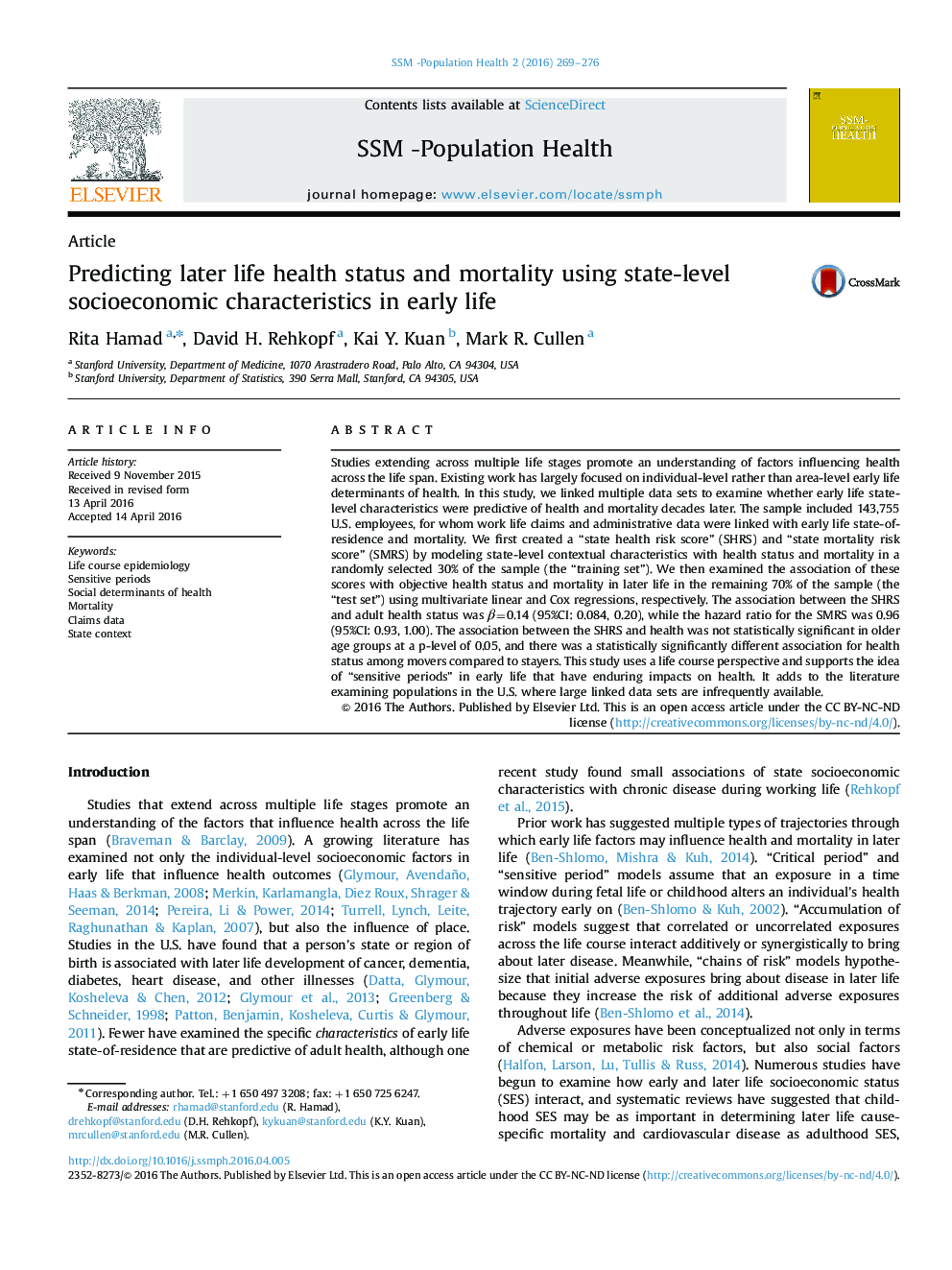| کد مقاله | کد نشریه | سال انتشار | مقاله انگلیسی | نسخه تمام متن |
|---|---|---|---|---|
| 1092331 | 1487260 | 2016 | 8 صفحه PDF | دانلود رایگان |
• A life course perspective clarifies individual and contextual health determinants.
• This study links data sets extending from childhood to death in a large US sample.
• We use predictive modeling to capture early life state socioeconomic factors.
• Early life state factors are associated with later health but not mortality.
Studies extending across multiple life stages promote an understanding of factors influencing health across the life span. Existing work has largely focused on individual-level rather than area-level early life determinants of health. In this study, we linked multiple data sets to examine whether early life state-level characteristics were predictive of health and mortality decades later. The sample included 143,755 U.S. employees, for whom work life claims and administrative data were linked with early life state-of-residence and mortality. We first created a “state health risk score” (SHRS) and “state mortality risk score” (SMRS) by modeling state-level contextual characteristics with health status and mortality in a randomly selected 30% of the sample (the “training set”). We then examined the association of these scores with objective health status and mortality in later life in the remaining 70% of the sample (the “test set”) using multivariate linear and Cox regressions, respectively. The association between the SHRS and adult health status was β=0.14 (95%CI: 0.084, 0.20), while the hazard ratio for the SMRS was 0.96 (95%CI: 0.93, 1.00). The association between the SHRS and health was not statistically significant in older age groups at a p-level of 0.05, and there was a statistically significantly different association for health status among movers compared to stayers. This study uses a life course perspective and supports the idea of “sensitive periods” in early life that have enduring impacts on health. It adds to the literature examining populations in the U.S. where large linked data sets are infrequently available.
Journal: SSM - Population Health - Volume 2, December 2016, Pages 269–276
